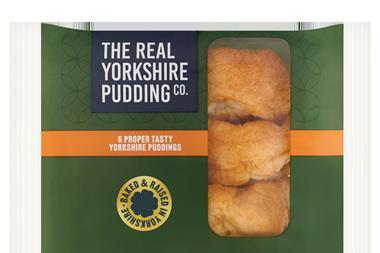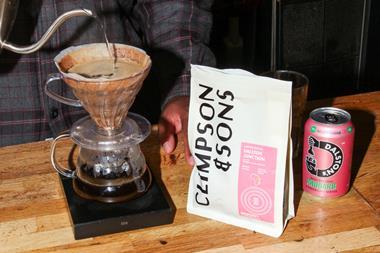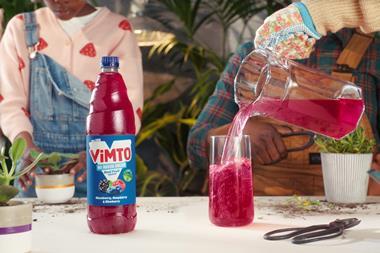>>What’s taste got to do with it? Mike Teague, sales director, Bavaria UK
The festive period saw the usual battle of the premium lager brands as each one tried to out price the other to become the consumer choice for Christmas. As pricing and promotion become increasingly dominant, it begs the question: whatever happened to people buying beer simply because they like the taste?
As a relatively small player in the premium lager market, Bavaria Premium Pils cannot compete with the advertising and marketing clout of the big brands such as Stella Artois and Budweiser. While 2003 saw the launch of our first trade and consumer marketing, advertising and PR campaign for Premium Pils, our priority is for consumers to enjoy and recognise the taste and quality of our lager rather than buy it because it happens to be on offer.
So, have consumers become blinded by advertising and promotions and forgotten why they actually like their preferred brand? Initial research would seem to indicate this is the case.
We recently conducted a taste testing among men and women and asked the participants to taste five different premium brands and pick their preferred drink. We then asked the participants to pick out their preferred brand simply by looking at the packaging on the bottle. The results revealed that only 35% of men could identify their preferred brand in the blind taste test while even fewer women (20%) could successfully pick out the taste of their favoured lager.
The participants were then questioned on why they bought their particular brand. Reasons such as widespread availability in bars and supermarkets and because it’s what their partner drinks were given, but the main finding showed both men and women were swayed by promotional offers and the brand name. No-one said they bought their preferred brand because of the taste.
The Christmas period seemed to underline these sentiments. In almost every supermarket the major brands ran cut-price promotions. Stella Artois and Budweiser went head-to-head and both offered three for £10 on four-packs of 330ml bottles in Asda and tried to out do each other on large packs. Stella Artois’ 24-pack of 330ml bottles was priced at £9.87 with Budweiser’s 20-pack of 330ml bottles on offer at £11.98.
The retailers need to learn that Christmas is an opportunity to make a reasonable margin because the consumer will purchase
beer in quantity as a matter of need. With this continuing trend within the major brands to raise the stakes in advertising and price promotions, the decision last year to axe Hofmeister, Kestrel and McEwans, arguably long-neglected ‘standard’ lager brands, came as no surprise.
How was it possible for them to survive in the advertising-led world of the premium 5% lagers that we operate in? It seems to be that consumers now prefer a continental premium lager whether it’s because of the taste or because the brands are perceived to have an aspirational ‘lifestyle’ quality to them. This was emphasised by Heineken’s decision to replace Heineken Cold Filtered with its flagship premium lager last year. The product was backed by a £5m launch, indicating that an advertising and marketing blitz using celebrity endorsement is the only way to break into the premium lager market.
So, persuading consumers to buy Bavaria Premium Pils because of its taste is the challenge and the blind taste test results actually showed that 40% of men and 44% of women preferred the taste of Bavaria over the other premium lagers tasted.
This doesn’t mean we aren’t serious about supporting the brand and we are confident we will increase distribution during 2004, but retailers can also do their bit by giving more shelf space to lesser-known brands. In turn, we need to spend our marketing budget cleverly in order to show customers that taste should also be a strong factor in their beer purchasing decision.
The festive period saw the usual battle of the premium lager brands as each one tried to out price the other to become the consumer choice for Christmas. As pricing and promotion become increasingly dominant, it begs the question: whatever happened to people buying beer simply because they like the taste?
As a relatively small player in the premium lager market, Bavaria Premium Pils cannot compete with the advertising and marketing clout of the big brands such as Stella Artois and Budweiser. While 2003 saw the launch of our first trade and consumer marketing, advertising and PR campaign for Premium Pils, our priority is for consumers to enjoy and recognise the taste and quality of our lager rather than buy it because it happens to be on offer.
So, have consumers become blinded by advertising and promotions and forgotten why they actually like their preferred brand? Initial research would seem to indicate this is the case.
We recently conducted a taste testing among men and women and asked the participants to taste five different premium brands and pick their preferred drink. We then asked the participants to pick out their preferred brand simply by looking at the packaging on the bottle. The results revealed that only 35% of men could identify their preferred brand in the blind taste test while even fewer women (20%) could successfully pick out the taste of their favoured lager.
The participants were then questioned on why they bought their particular brand. Reasons such as widespread availability in bars and supermarkets and because it’s what their partner drinks were given, but the main finding showed both men and women were swayed by promotional offers and the brand name. No-one said they bought their preferred brand because of the taste.
The Christmas period seemed to underline these sentiments. In almost every supermarket the major brands ran cut-price promotions. Stella Artois and Budweiser went head-to-head and both offered three for £10 on four-packs of 330ml bottles in Asda and tried to out do each other on large packs. Stella Artois’ 24-pack of 330ml bottles was priced at £9.87 with Budweiser’s 20-pack of 330ml bottles on offer at £11.98.
The retailers need to learn that Christmas is an opportunity to make a reasonable margin because the consumer will purchase
beer in quantity as a matter of need. With this continuing trend within the major brands to raise the stakes in advertising and price promotions, the decision last year to axe Hofmeister, Kestrel and McEwans, arguably long-neglected ‘standard’ lager brands, came as no surprise.
How was it possible for them to survive in the advertising-led world of the premium 5% lagers that we operate in? It seems to be that consumers now prefer a continental premium lager whether it’s because of the taste or because the brands are perceived to have an aspirational ‘lifestyle’ quality to them. This was emphasised by Heineken’s decision to replace Heineken Cold Filtered with its flagship premium lager last year. The product was backed by a £5m launch, indicating that an advertising and marketing blitz using celebrity endorsement is the only way to break into the premium lager market.
So, persuading consumers to buy Bavaria Premium Pils because of its taste is the challenge and the blind taste test results actually showed that 40% of men and 44% of women preferred the taste of Bavaria over the other premium lagers tasted.
This doesn’t mean we aren’t serious about supporting the brand and we are confident we will increase distribution during 2004, but retailers can also do their bit by giving more shelf space to lesser-known brands. In turn, we need to spend our marketing budget cleverly in order to show customers that taste should also be a strong factor in their beer purchasing decision.

















No comments yet